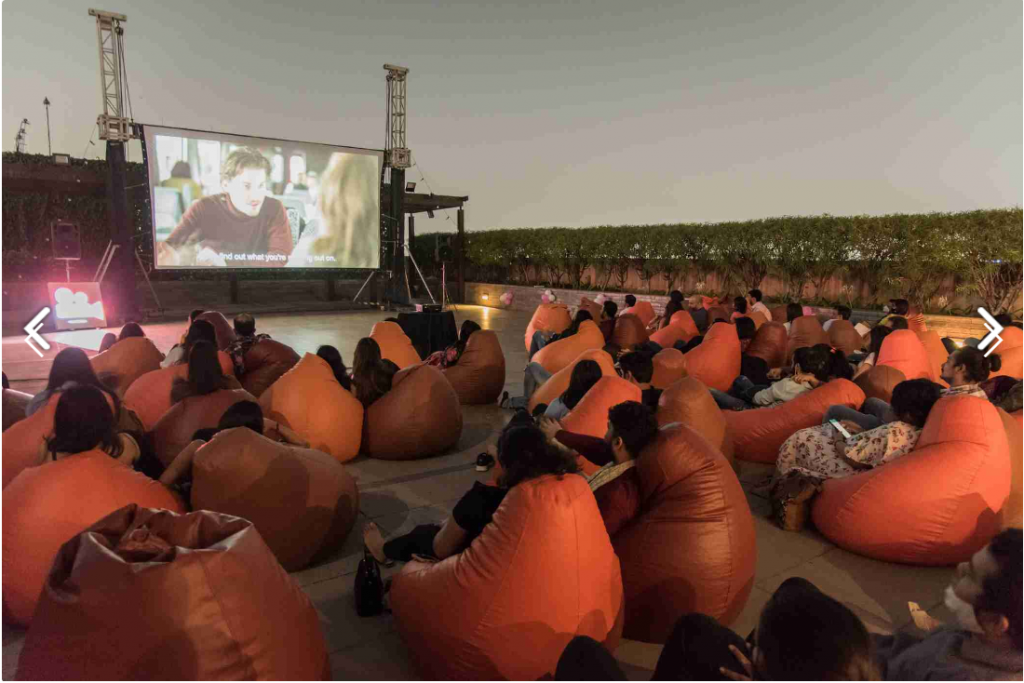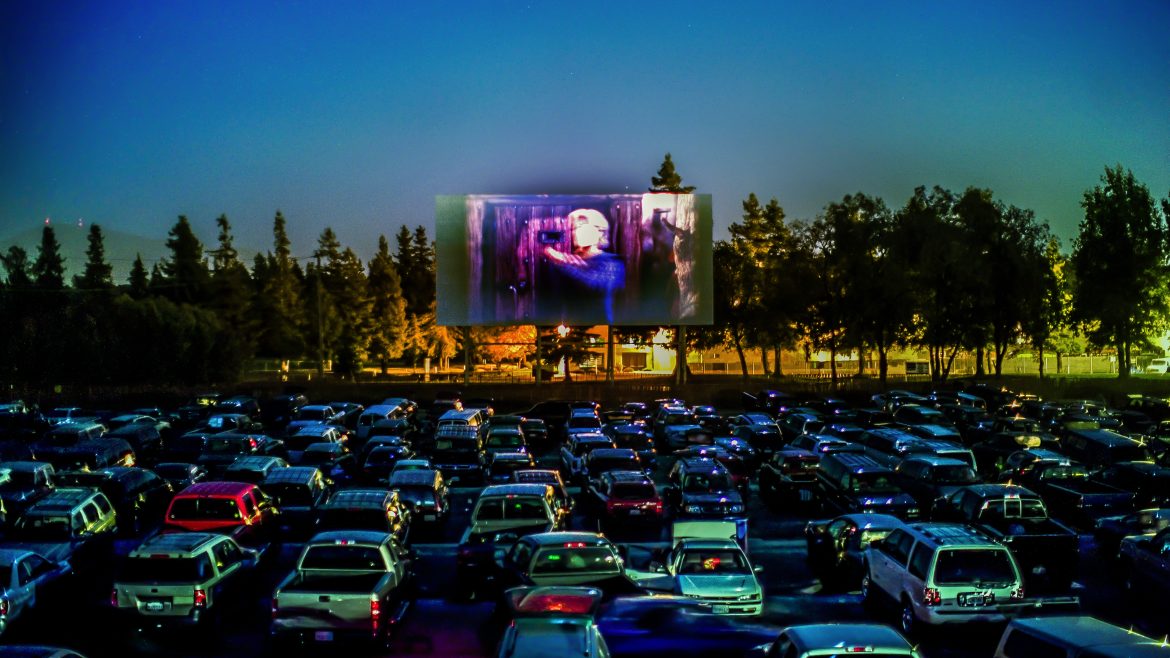I love watching movies. In a hall. With a barrage of people. I love the irresistible fragrance of popcorns that are equal parts buttery and overpriced. I love the cushy recliner seats that have offered many before me, the high-ground to comfortably view the big screen and the general discomfort of those occupying the regular seats. I also love the collective escape theatres provide.
Since the dawn of language, people have gathered in dimly lit places to listen to stories. This has been a part of our nature and a way for us to connect with one another. The theatre experience is like a modern version of this ancient tradition, where the campfire’s flames are replaced by moving pictures that tell the story.
While watching a movie, one is allowed to take liberties that real life can seldom afford. In a theatre, we become silent observers, staring into the eyes of these larger-than-life characters, prying into their private spaces. The intrigue lies in the fact that these characters remain blissfully ignorant of our scrutiny. The only thing standing between us and discovery is their avoidance of eye-contact with the camera. Until then, we’re free to savour the spectacle.

Things I dislike with a passion but tolerate with exasperation at a cinema hall, includes the parents of crying children, cinema food, the never ending commercials before a movie and regular seats with impolite legroom. In the early 20th century, Richard Hollingshead was dealing with a similar problem, only his problem was as old as his mother – his mother – who was a little bigger than what the regular seats could comfortably accommodate.
Mrs Hollingshead’s inability to fit into regular seats at the indoor movie theatre demanded a creative solution and his son didn’t miss a beat to find it. According to Jim Kopp of the United Drive-in Theatre Owners Association, “Hollingshead stuck her in a car and put a 1928 projector on the hood of the car, and tied two sheets to trees in his yard”. With this makeshift apparatus, Hollingshead not only found a creative solution to a rather common problem but created an iconic cultural experience.
Before opening the gates to the audience, Hollingshead experimented with the layout of the theatre that included ramps for cars to be parked at different heights so that everyone could comfortably see the screen. He finally patented his concept in May 1933. On June 6, 1933 in Camden, New Jersey, paying 25 cents per car, and 25 additional cents per person, people flocked to watch Wives Beware, featuring Adolphe Menjou and Margaret Bannerman. His slogan at the time was, “The whole family is welcome, regardless of how noisy the children are.” However, the concept didn’t get adequate traction until the 1940s when in-car speakers were incorporated. By the late 1950s, nearly 5,000 drive-in theatres popped up around the United States.
The drive-ins offered the audiences simple pleasures that were denied to them at the indoor theatres – the freedom to ask “who is that, where is he going, why is he doing that?”, cry, smoke, eat or make out without inviting objectionable glances. In an article titled Why Drive-Ins Were More Than Movie Theaters, Eric Blakemore explored how drive-ins embodied the suburbanisation of middle class families — and created an entirely new way of watching the movies. According to her, “this informal, carnivalesque atmosphere lent itself to a strange combination of socialisation and isolation.”
It’s interesting to note that drive-ins came to the fore when Hollywood’s golden age ended. While some drive-ins faced declines in attendance due to changing audience preferences and urban development, others thrived by adapting to the changing entertainment landscape and nostalgia-driven interest in retro experiences.
Drive-in theatres welcomed people from various backgrounds, creating a more inclusive space, especially for African-Americans who found them safer than segregated cinemas. These drive-ins also attracted a diverse audience, including people with disabilities, housewives, kids, and working-class families. However, this mixing of different groups made some cultural and business leaders uneasy, giving drive-ins a reputation of being “passion pits” where anything and everything was permissible.
Drive-in theatres had some limitations. They could only operate in certain seasons and relied on good weather, unlike the contemporary theatres with flexible show timings and year-round sales. In the 1970s, the oil crisis led to smaller cars to save on gas costs, making drive-in viewing less comfortable. To compensate for declining income, drive-ins shifted from family-friendly movies to showing exploitative films, including slasher horrors and adult content.
Notably, this slowly prompted the drive-ins’ reputation as B movie destinations which led to their eventual fall from popularity. The rise of home video, cable, and fancier movie theatres did the rest. Many drive-in theatres occupied prime real estate locations, which, over time, became more valuable for commercial or residential development. The sale of these properties for real estate ventures often led to the closure of drive-ins, as land became more profitable for other purposes.
Another crucial factor was a shift in demographics, smaller family sizes and changing lifestyles, which meant that the family-oriented experience that drive-ins once offered became less of a draw for younger generations. With dual-income households and more activities competing for leisure time, drive-ins struggled to maintain their relevance.
Also, maintaining a drive-in theatre required considerable investment in technology, upkeep, and facilities. Rising operational costs, including expenses for land, projection equipment, sound systems, and maintenance, made it difficult for many drive-ins to remain financially viable. The 1990s and early 2000s brought significant cultural and technological changes. The advent of the internet, video games, and the rapid growth of digital media altered the way people entertained themselves and drive-ins seemed increasingly out of step with these evolving preferences.
However, in the wake of the COVID-19 pandemic, drive-in theatres experienced a significant resurgence in popularity on a global scale. As social distancing and safety precautions became paramount, drive-in theatres emerged as a preferred choice for entertainment as they offered a unique blend of nostalgia and pandemic-appropriate entertainment.
While the world has gone back to their pre-pandemic lifestyle and cinema seems to be enjoying its glorious comeback, drive-in theatre’s resurgent popularity has made it clear that it’s here to last longer than a summer romance.
If reading this article has kindled in you a longing to experience the magic of celluloid under the stars, here’s a list of 5 drive-in theatres in India that are perfect for a cinematic evening:
Mumbai: Maison PVR drive-in theatre, Bandra Kurla Complex

- Bhopal: Hotel Lake View Ashok, Shyamala Hills
- Chennai: Prarthana Beach, Injambakkam
Bangalore: Timbre Theatre, Godrej Royale Woods

Delhii and other cities: Sunset Cinema Club




